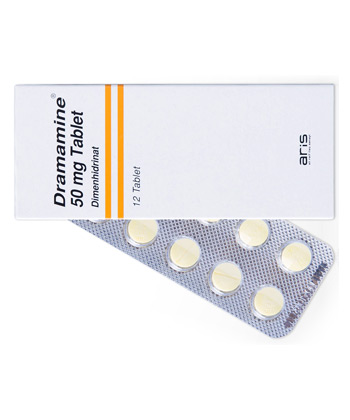Calcium Carbonate

Calcium Carbonate
- In our pharmacy, you can buy calcium carbonate without a prescription, with delivery in 5–14 days throughout Canada (English). Discreet and anonymous packaging.
- Calcium carbonate is used for the treatment of conditions like hypocalcemia, osteoporosis prevention, and as an antacid for dyspepsia and GERD. The drug works by neutralizing stomach acid and providing elemental calcium.
- The usual dosage varies: for hypocalcemia, 1000–1500 mg per day; for osteoporosis prevention, 1200–1500 mg per day; and for antacid use, 500–1500 mg as needed.
- The form of administration includes tablets, chewable tablets, effervescent tabs, powders, and liquid suspensions.
- The onset time for relief can be within minutes when used as an antacid.
- The duration of action for calcium carbonate varies: antacid effects last for a few hours, while supplementation may be needed long-term.
- It is advised to avoid alcohol as it may increase the risk of side effects.
- The most common side effect is mild constipation.
- Would you like to try calcium carbonate without a prescription?
Critical Warnings & Restrictions in Canada
Basic Calcium Carbonate Information
- INN (International Nonproprietary Name): Calcium Carbonate
- Brand Names Available in Canada: Tums, Caltrate, Os-Cal, Rolaids
- ATC Code: A02AC01
- Forms & Dosages: Tablets, chewable tablets, effervescent tabs
- Manufacturers in Canada: Various pharmaceutical companies
- Registration Status in Canada: OTC
- OTC / Rx Classification: Over-the-Counter
Safety should always take precedence when considering any supplement, including calcium carbonate. Concerns arise especially related to potential side effects and interactions. Consulting a healthcare professional before starting or adjusting any calcium carbonate regimen is crucial.
High-Risk Groups
Certain demographics face heightened risks when using calcium carbonate:
- Elderly: Elderly individuals are often at higher risk for developing hypercalcemia and constipation due to age-related changes in kidney function.
- Pregnant Women: Pregnant women should exercise caution, as excessive calcium levels can negatively impact fetal development.
- Indigenous Health Considerations: Unique health contexts among Indigenous populations may necessitate specific dosing adjustments.
Interaction With Activities
Understanding how calcium carbonate can impact daily activities is essential, especially for those who drive or operate heavy machinery. Under Canadian law, the effects of calcium carbonate, particularly when taken in high doses, could potentially alter alertness and cognitive function, posing safety risks.
Q&A — “Can I Drive After Taking It in Canada?”
Generally, most individuals can safely drive after taking calcium carbonate. However, for those who experience side effects like dizziness or confusion, waiting until they feel normal is advisable. Monitoring individual reactions is key.
Usage Basics for Canadians
Calcium carbonate is a well-recognized supplement with the International Nonproprietary Name (INN) being calcium carbonate. It is predominantly available in various formulations, including tablets, chewables, and effervescent options across Canada.
INN, Brand Names Available in Canada
Some popular brand names in Canada include:
- Tums - Commonly used for heartburn relief.
- Caltrate - Often marketed as a calcium supplement.
Legal Classification Under Health Canada
Calcium carbonate falls under the Over-the-Counter (OTC) category, meaning that it can be easily acquired without a prescription. A Drug Identification Number (DIN) ensures that it meets local regulations.
Canadian Dosing Guide
When using calcium carbonate, adhering to proper dosing guidelines is vital. Based on Health Canada recommendations, dosing will typically vary based on the individual’s health status and specific needs.
Standard Regimens
Common dosing guidelines for various conditions include:
- Hypocalcemia: 1000-1500 mg/day of elemental calcium.
- Osteoporosis: 1200-1500 mg/day, often in combination with vitamin D.
- As an Antacid: 500-1500 mg/dose, as needed.
Adjustments for Comorbidities
For those with conditions such as diabetes or renal issues, adjustment of calcium carbonate dosage may be necessary. Regular monitoring with a healthcare provider will help mitigate risks, especially regarding complications like hypercalcemia.
Q&A — “What If I Miss a Dose Under My Provincial Drug Plan?”
If a dose is missed, the general recommendation is to take it as soon as you remember. If it’s almost time for the next dose, skip the missed one—do not double up.
Interaction Chart
Calcium carbonate interacts with several foods and drugs, which can reduce its effectiveness or increase the risk of side effects. Understanding these interactions can enhance safety and efficacy.
Food and Drinks
Common interactions include:
- Coffee and Alcohol: Both can impair absorption of calcium carbonate.
Common Drug Conflicts
Calcium carbonate can interact negatively with certain medications. Always refer to Health Canada advisories for detailed guidance regarding contraindications to ensure safe medication practices.
User Reports & Trends in Canada
Feedback from various Canadian patient forums underscores the real-world experiences of individuals using calcium carbonate. Such insights can guide potential users and enhance understanding of the supplement's effects.
Canadian Patient Forums and Review Platforms
Patients frequently share their experiences regarding the effectiveness and side effects of calcium carbonate on platforms like Reddit and specialized health forums.
Community Pharmacy Feedback
Common inquiries at community pharmacies include questions about the effectiveness of calcium carbonate as an antacid and concerns about potential side effects. Pharmacists play an important role in educating the public about its safe use.
Access & Purchase Options
Obtaining calcium carbonate in Canada is relatively easy, thanks to its availability in a variety of settings. Individuals can find it in pharmacies, grocery stores, and online platforms.
National pharmacy chains
Major pharmacy chains across Canada, such as Shoppers Drug Mart and Rexall, typically stock calcium carbonate products, including chewable tablets and liquid forms. These are available over-the-counter, making it effortless for consumers to purchase calcium carbonate without a prescription. Availability may vary based on location and specific product lines, but the most popular brands like Tums, Caltrate, and Rolaids are commonly found in these stores.
Online pharmacies in Canada & provincial restrictions
Online shopping for calcium carbonate is on the rise, providing convenience and accessibility. Canadian online pharmacies offer various formulations of calcium carbonate without a prescription. However, it's important to be aware of provincial regulations that might limit certain online purchases. Shoppers should verify whether their province allows online transactions for health supplements and pharmaceuticals.
Mechanism & Pharmacology
Calcium carbonate serves multiple functions in the body, primarily as a supplement for calcium deficiency and as an antacid. When ingested, it reacts with gastric acids to neutralize stomach acid, offering relief from heartburn and indigestion. Additionally, it provides elemental calcium, which is crucial for maintaining healthy bones and teeth.
Simplified explanation
Think of calcium carbonate as a double-duty player in your health routine. It tackles digestive discomfort by neutralizing stomach acid, making it a go-to for relief from heartburn and acid reflux. Plus, it’s a frontline warrior when it comes to boosting calcium levels in your body, supporting bone health and reducing risks associated with osteoporosis.
Clinical terms
In clinical terms, calcium carbonate is classed under antacids and dietary supplements, primarily defined by its ATC code A02AC01 as an antacid that comprises calcium compounds. Health Canada recognizes it for various conditions related to calcium deficiencies and as a dietary supplement. It’s often a go-to for conditions like hypocalcemia and osteoporosis, making it an essential part of dietary regimens, especially in populations at risk of calcium deficiency.
Indications & Off-Label Uses in Canada
In Canada, calcium carbonate holds several approved uses primarily as a dietary supplement and an antacid. However, healthcare providers also explore its off-label applications, extending its utility in various clinical settings.
Approved indications
Health professionals typically recommend calcium carbonate for:
- Dietary supplementation to meet calcium needs
- Management of acid reflux, heartburn, and related dyspeptic conditions
Common off-label practices
Some Canadian physicians utilize calcium carbonate off-label for conditions like kidney disease management, using it as a phosphate binder. Additionally, its anti-reflux properties make it a staple in palliative care, where patients may be unable to take other medications comfortably.
Key Clinical Findings
Recent research has revealed vital insights into the efficacy and safety of calcium carbonate usage in clinical practice. These findings underscore its role in both treatment and preventative measures.
Canadian and international studies 2022–2025
Noteworthy studies conducted between 2022 and 2025, both in Canada and worldwide, have affirmed calcium carbonate’s place in dietary supplementation and its effectiveness in managing symptoms related to acidity. These studies generally support its safety profile when used as recommended, with few serious side effects reported among the population.
Ongoing Health Canada safety monitoring
Health Canada remains vigilant in monitoring the safety of calcium carbonate products through ongoing assessments. This demonstrates the commitment to ensuring that any concerns regarding adverse effects or usage patterns are addressed promptly, reinforcing consumer trust in these widely used supplements.
Alternatives Matrix
While calcium carbonate is popular, several alternatives exist. Understanding these options can help individuals make informed choices for their health needs.
Comparable medicines with DIN in Canada
Alternative medications include calcium citrate, which is often better absorbed and may be preferred for those with gastric concerns, and magnesium hydroxide, which also serves as an antacid. These alternatives carry their unique benefits and use cases within the realm of calcium supplementation.
Pros and cons checklist
- Calcium Citrate: Easier on the stomach, but often more expensive.
- Magnesium Hydroxide: Offers additional digestion relief, but may cause laxative effects.
Each alternative carries its pros and cons, making it essential for individuals to weigh their options based on personal health needs.
Common Questions from Canadian Patients
Canadians often wonder about the safety and efficacy of calcium carbonate supplements. Many ask if it's suitable for children or if it interacts with other medications. Other common queries include the specific coverage options under provincial drug plans and how to properly use calcium carbonate for conditions like acid reflux or osteoporosis. Patients frequently seek clarity on dosages as well, worried about either underdosing or overdosing. It's also common to inquire about potential side effects, especially regarding digestive issues like constipation and bloating, which are associated with calcium carbonate.
Suggested Visual Content
Visuals are a powerful tool to communicate complex information clearly. Infographics, charts, and flowcharts play a critical role in enhancing patient understanding, especially for those new to calcium carbonate or those managing health conditions. They allow for quick reference and simplify the communication of important information at a glance.
Infographics on provincial drug plan coverage
An engaging infographic could illustrate the various provincial drug plans that include coverage for calcium carbonate. This could encompass key information such as eligibility criteria, maximum reimbursement limits, and specifics like whether it covers calcium carbonate in combination with vitamin D. Patients would benefit from visual breakdowns of differences between coverage across provinces, making it easier to understand their benefits and options.
Canadian pharmacy purchase flowcharts
A flowchart detailing the step-by-step process for purchasing calcium carbonate in Canadian pharmacies can simplify the experience for patients. It could walk users through finding the right formulation, checking for prescription requirements (if any), and understanding the pricing structures, whether through insurance or out-of-pocket. This makes it straightforward for individuals looking to buy calcium carbonate without a prescription.
Registration & Regulation
The regulatory landscape governing calcium carbonate in Canada ensures both safety and efficacy. Health Canada oversees the approval process, with calcium carbonate being classified primarily as an Over-The-Counter (OTC) product. This means it should meet rigorous standards before becoming available to the public. The process involves thorough reviews of clinical data to establish its safety for general use.
Health Canada approval
Before being sold in Canadian pharmacies, calcium carbonate must receive Health Canada approval. The evaluation focuses on its usage as a supplement and antacid, ensuring it aligns with health standards. Currently, calcium carbonate remains widely available without prescription under various brand names and packaging formats, including tablets and chewable forms, making it accessible for patients.
DIN number and labelling requirements
Products like calcium carbonate must have a Drug Identification Number (DIN) issued by Health Canada. This serves as a unique identifier, ensuring traceability and accountability in the marketplace. Additionally, bilingual labelling is mandatory, complying with Canada’s language laws while providing essential information on usage, dosage, and precautions to consumers.
Storage & Handling
Proper storage conditions are crucial to maintaining the integrity and efficacy of calcium carbonate products. They should be stored away from excess moisture and light to prevent degradation, preferably in a temperature-controlled environment to ensure they remain effective for consumer use.
Standard Canadian household conditions
For standard Canadian households, calcium carbonate products should ideally be kept at room temperature, below 25°C, and protected from moisture. Keeping them in their original containers ensures they are shielded from environmental factors.
Cold-chain requirements (where applicable)
While typical calcium carbonate formulations do not require cold-chain management, any variations, such as liquid forms, need specific temperature control to maintain stability. If applicable, storing these in a cold environment is critical to prevent degradation and ensure product safety.
Guidelines for Proper Use
The effective use of calcium carbonate hinges on adhering to best practices put forth by Canadian health authorities. These guidelines emphasize appropriate dosing based on individual needs and health conditions. It's highly recommended for patients to consult pharmacists or healthcare providers for accurate recommendations tailored to their specific situations.
Canadian pharmacist guidance
Pharmacists often advise that individuals take calcium carbonate with meals for optimal absorption, especially when used to alleviate symptoms of acid reflux or heartburn. Timing doses to coincide with mealtime ensures that the antacid properties work effectively. They also caution against exceeding recommended dosages to prevent side effects such as constipation or hypercalcemia.
Provincial health authority recommendations
Different provinces may have varied recommendations regarding calcium carbonate usage based on unique health authority guidelines. For example, the Ontario Drug Benefit program outlines specific dosing regimens and eligible populations that qualify for coverage. Being aware of these guidelines can assist patients in navigating their options concerning calcium carbonate supplementation.
| City | Region | Delivery time |
|---|---|---|
| Toronto | Ontario | 5–7 days |
| Vancouver | British Columbia | 5–7 days |
| Montreal | Quebec | 5–7 days |
| Calgary | Alberta | 5–7 days |
| Ottawa | Ontario | 5–7 days |
| Edmonton | Alberta | 5–7 days |
| Quebec City | Quebec | 5–7 days |
| Halifax | Nova Scotia | 5–9 days |
| Winnipeg | Manitoba | 5–9 days |
| Victoria | British Columbia | 5–9 days |
| Saskatoon | Saskatchewan | 5–9 days |
| Regina | Saskatchewan | 5–9 days |








